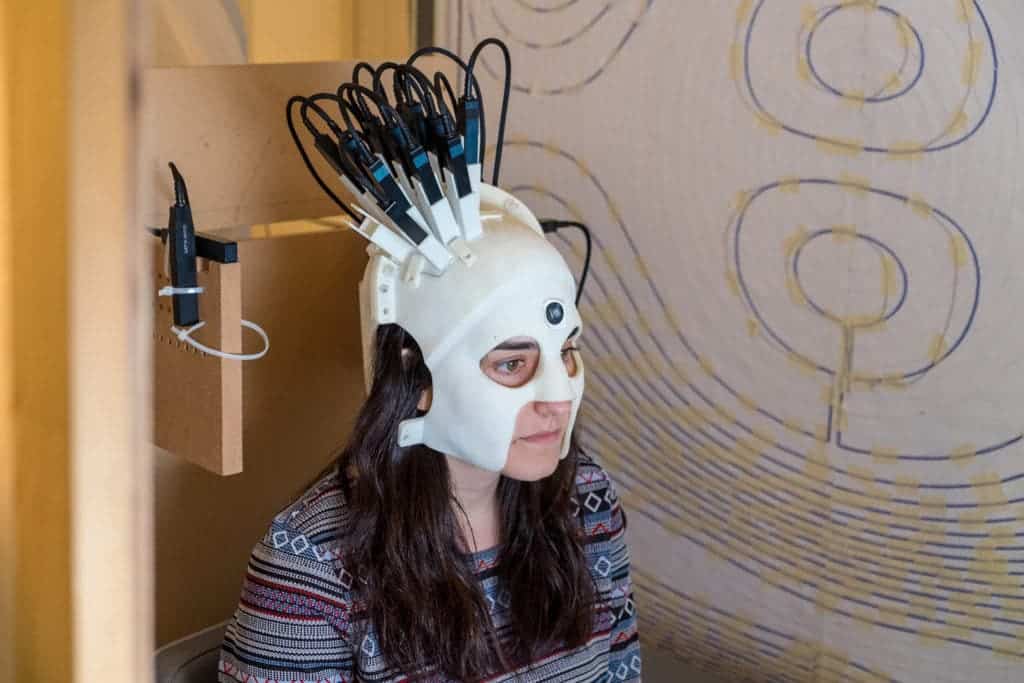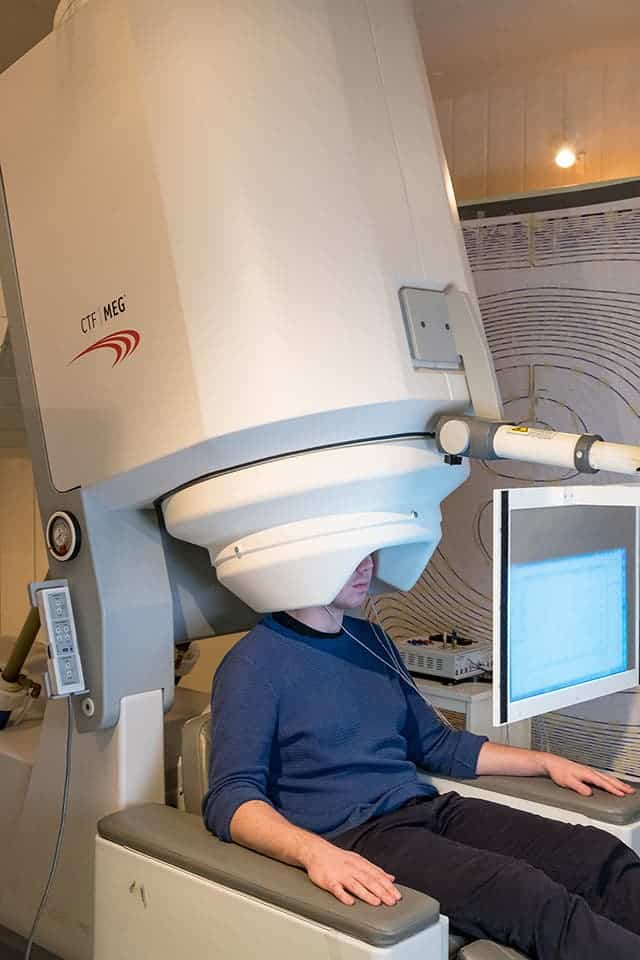
It looks like something out of a SciFi blockbuster, but this one-of-a-kind helmet might revolutionize human brain imaging. Using this light-weight, magnetoencephalography (MEG) system, scientists can measure the brain activity of participants while they perform natural movements like nodding, stretching, interacting with other people, or playing sports. This used to be impossible to do with the traditional, fixed and cumbersome MEGs that require participants to stay completely still in order to measure brain activity. As such, this wacky-looking helmet could reveal new insights into the neural pathways and mechanisms involved in the human brain that would have been otherwise impossible to ascertain.
Neurons communicate with each other using chemicals called neurotransmitters. However, to transmit the actual message from the receiving neuron’s dendrites to its own axon terminals, a different medium is used: electricity. When a neurotransmitter such as dopamine triggers the receiving neuron to fire, it sends an electrical “action potential” along its length, similarly to how an electrical pulse flows down a metal wire. Instead of electrons moving through a circuit, an action potential in a neuron occurs because ions move across the neuronal membrane.
This current generates weak magnetic fields which can be detected right outside the scalp. A MEG measures these magnetic fields, allowing scientists to see which parts of the brains are engaged when undertaking certain tasks. Doctors often rely on MEG to plot a roadmap of the brain that is useful for preoperative and treatment planning for individuals with epilepsy, as well as for patients undergoing surgery to remove a brain tumor or other lesions. In research, MEG has proven indispensable for scientists who are looking to understand human brain function, as well as neurological and psychiatric disorders.

Now, British researchers at University of Nottingham and University College London have come up with a revolutionary new setup for a wearable MEG. Unlike the MEGs used in practice today, which are incredibly large and weigh half a tonne, the new system is basically a helmet that can be worn while the user performs movements — something which would normally cause a lot of imaging problems in a conventional setup.
The scanner measures electrophysiological brain function – it allows is to pinpoint, with spatial accuracy of a few millimetres and temporal accuracy of a few milliseconds, which parts of the brain are involved when we undertake specific tasks. It can do this in an environment where subjects are free to move around. This is a step change for neuroscientific research, with neuroscientists able to study the brain in a whole new way,” Dr. Matt Brookes, who leads the MEG work in Nottingham, told ZME Science.
The crux of the innovation lies in the new ‘quantum’ sensors that are mounted in a 3-D printed prototype. These sensors are lightweight and can work at room temperature, whereas the sensors employed by a typical MEG have to be kept very cold (-269°C), hence the bulky configuration. The closer these quantum sensors are to the scalp, the better the brain activity signal they can pick up.
However, the sensors are so sensitive, they receive interference from Earth’s magnetic field. The team of researchers solved this problem by developing special electromagnetic coils, which reduced Earth’s magnetic field around the scanner by a factor of 50,000.
“One of the biggest challenges was that, in order to develop the system such that subjects could move their head, we had to null the Earth’s magnetic field in a region surrounding the head. Our system is housed in a magnetically screened room, which reduces the earths field by approximately a factor of 2,000, but that wasn’t good enough – we needed a factor of ~50,000. To do this we were able to design and build a novel set of electromagnetic coils. These coils had to be designed to sit on planes either side of the subject, so as not to enclose the person being scanned, or make them claustrophobic. The coils that we designed and built were able to almost completely remove Earth’s field, thus enabling the sensors to operate and imaging data to be captured whilst the subject moved their head,” Brookes explained.

The new wearable MEG will likely prove revolutionary for research and will enable treatment for patients who traditionally could use a MEG scanner, such as young children with epilepsy or patients suffering from neurodegenerative disorders like Parkinson’s disease. Tests so far suggest that the MEG helmet works just as well as its fixed counterpart, although it will require further tweaking in order to provide imaging for lower bandwidths.
“The only minor limitation compared to traditional systems is bandwidth. The overwhelming majority of brain activity that MEG measures is in the 1-100Hz band – well within the scope of our sensors. However, there are effects in the brain at a higher frequency (e.g. 300Hz). This would be a challenge for our system – however future developments in quantum sensing may make this possible,” Brookes wrote in an email.
Besides improving bandwidth, the researchers will further refine their prototype so it is more “patient-friendly.” Hopefully, clinical trials will follow soon after.
“This is very much a prototype system – a one of a kind proof of principle machine. Our next step is to make it more patient (and in particular more child) friendly. To do that we intend to make the helmets less intimidating – constructing them from a flexible material so they become more like a ‘scrum-cap’ worn by rugby players. In that way we hope to construct more generic helmets that fit anyone, rather than bespoke helmets that only fit one person,” Brookes said.
The findings appeared in the journal Nature.






